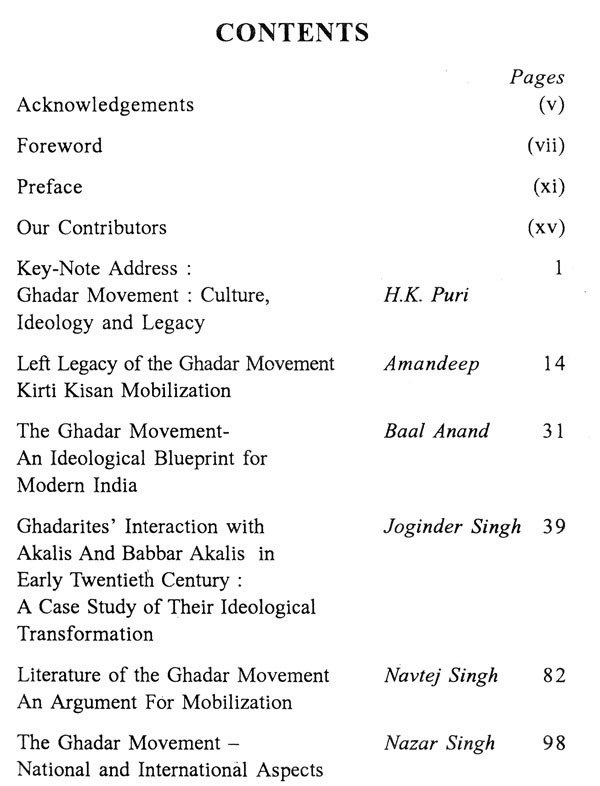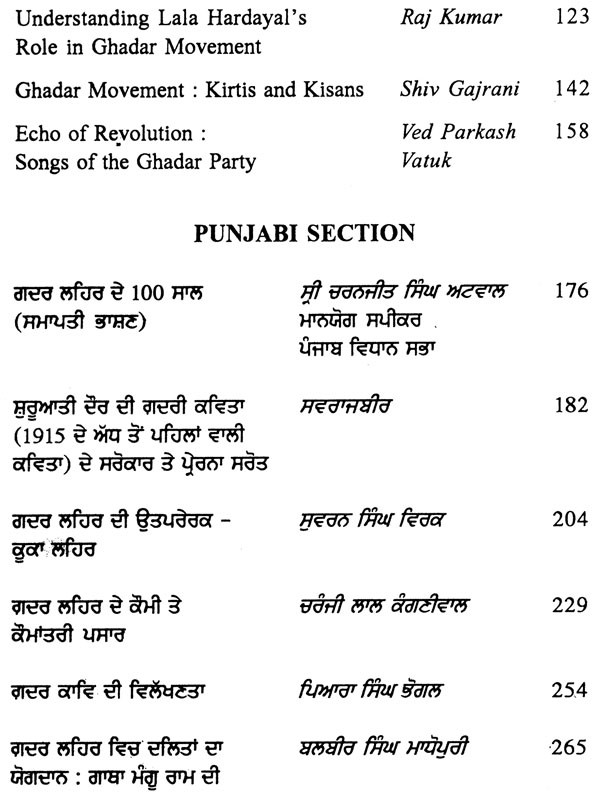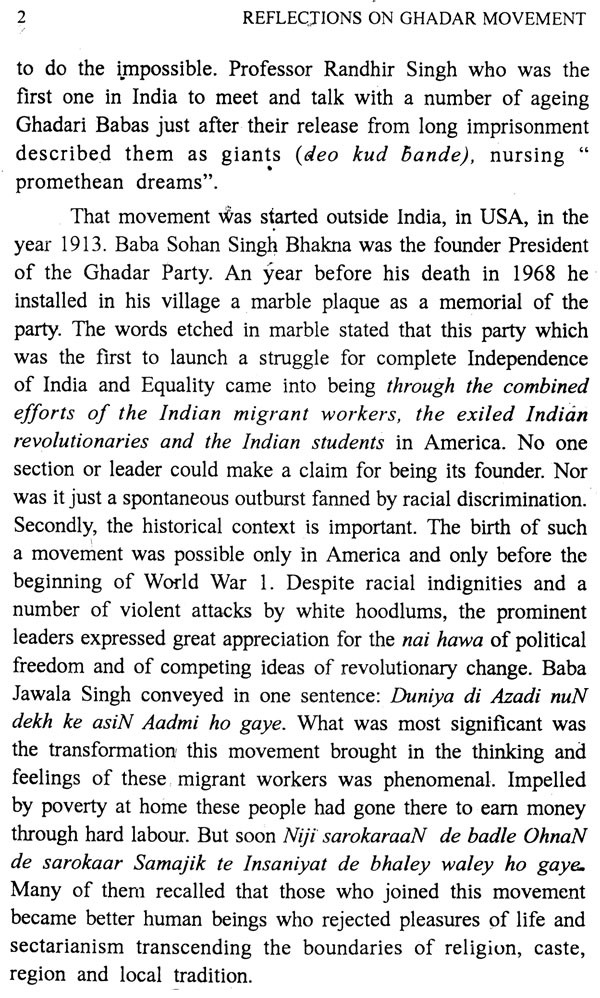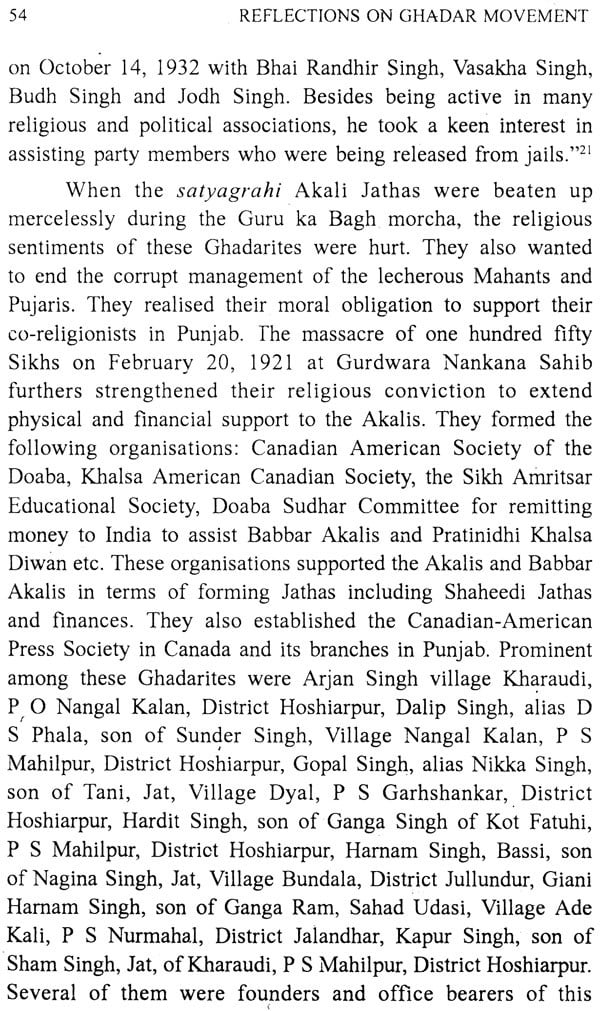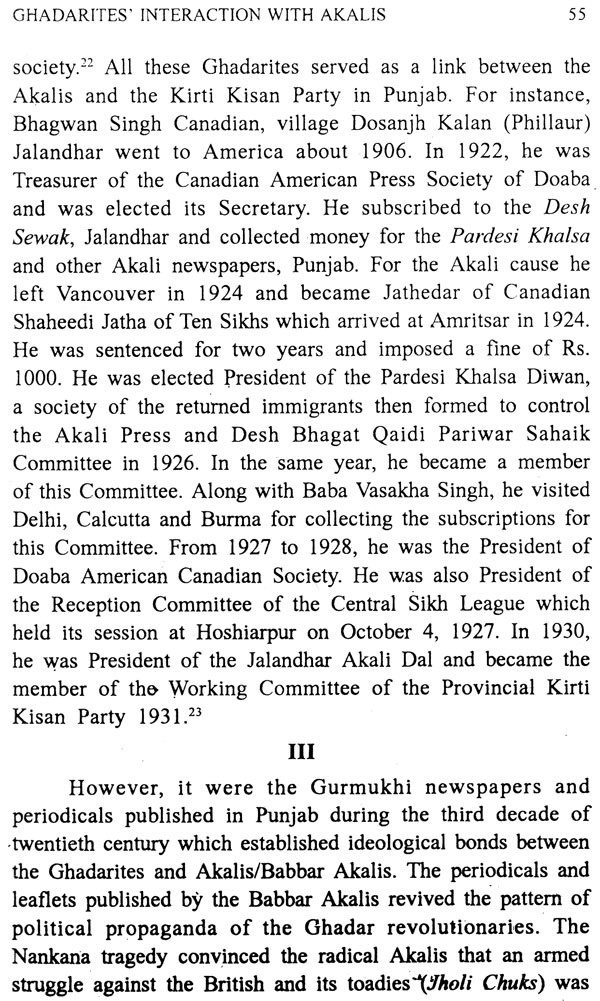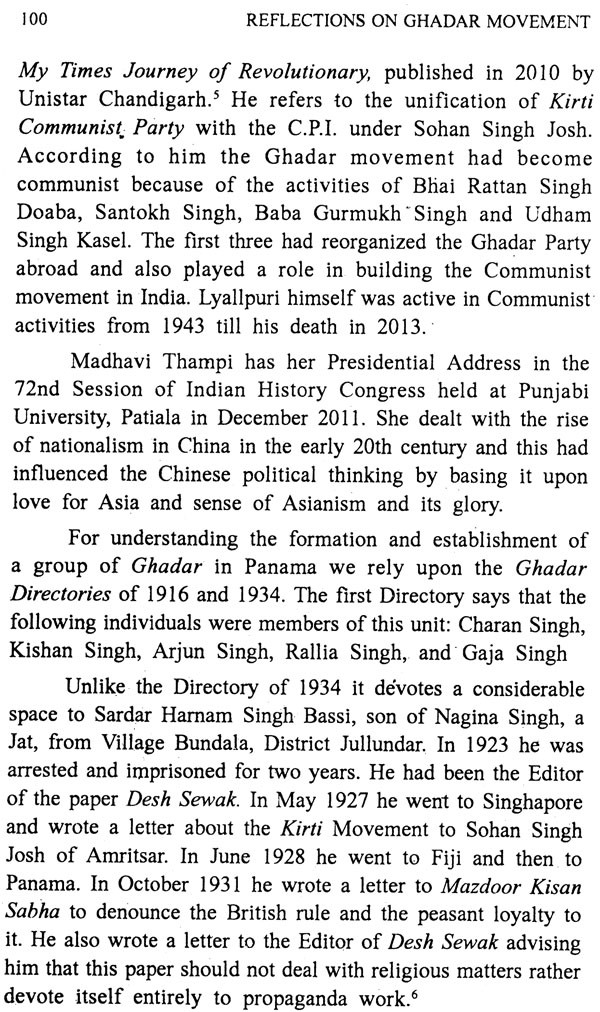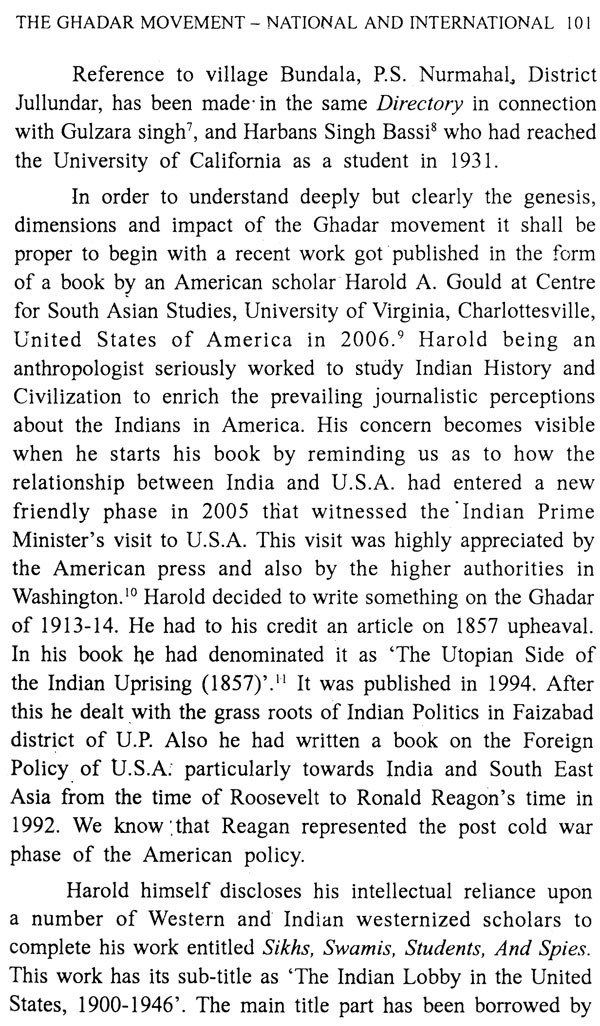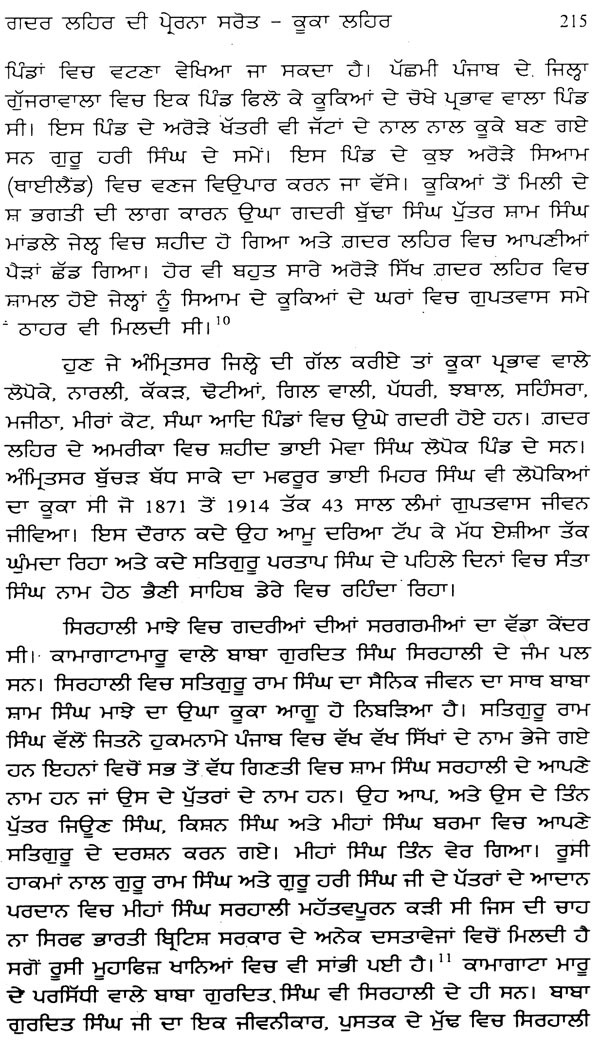
Reflections on Ghadar Movement
Book Specification
| Item Code: | UAZ886 |
| Author: | Joginder Singh |
| Publisher: | Guru Nanak Dev University, Amritsar |
| Language: | PUNJABI AND ENGLISH |
| Edition: | 2014 |
| Pages: | 294 |
| Cover: | HARDCOVER |
| Other Details | 9.00 X 6.00 inch |
| Weight | 490 gm |
Book Description
The Ghadar revolutionaries launched an armed struggle from abroad for liberating Indians from the yoke of British slavery. For this struggle, they formed Hindustan Association of the Pacific Coast, USA on April 13, 1913; established their headquarters Yugantar Ashram and launched Ghadar, a weekly paper published in several languages namely Urdu, Gurmukhi, Hindi and Gujrati. Subsequently, they founded several newspapers and periodicals like United State of India and Hindustan. Yet, the Ghadar served as the ideological organ of the party. The publications of these newspapers and periodicals articulate national and international scope of the movement. Similarly, the non-sectarian character of this movement was also reflected in the diverse religious and regional background of the Ghadar revolutionaries. Majority of them came from Sikh families and were followed by the Hindu and Muslim families.
In commemoration of the centenary of the birth of the Ghadar movement, the Guru Nanak Dev University organized a national seminar on this movement on November 14-15, 2013. It was felt that more adequate work has to be done on the historiography or even the history of struggle for India's freedom and its complex interface with ideas and struggles for revolutionary changes in the world abroad. The Punjabi Sikh migrant workers and Indian revolutionaries abroad made collective efforts to start a movement in the USA during the year 1913. It was practically the first pan-Indian militant nationalist movement for the liberation of India. Its aim was not limited to the expulsion of the foreign rulers and their replacement by the local Indians in control of state power. More than that it also imagined the establishment of a secular, democratic republic somewhat on the pattern of the USA. Its propaganda literature including the weekly paper Ghadar and Ghadar poetry reflected the dreams of building Indian nation, creating a good and caring society based on social equality and justice.
**Contents and Sample Pages**

